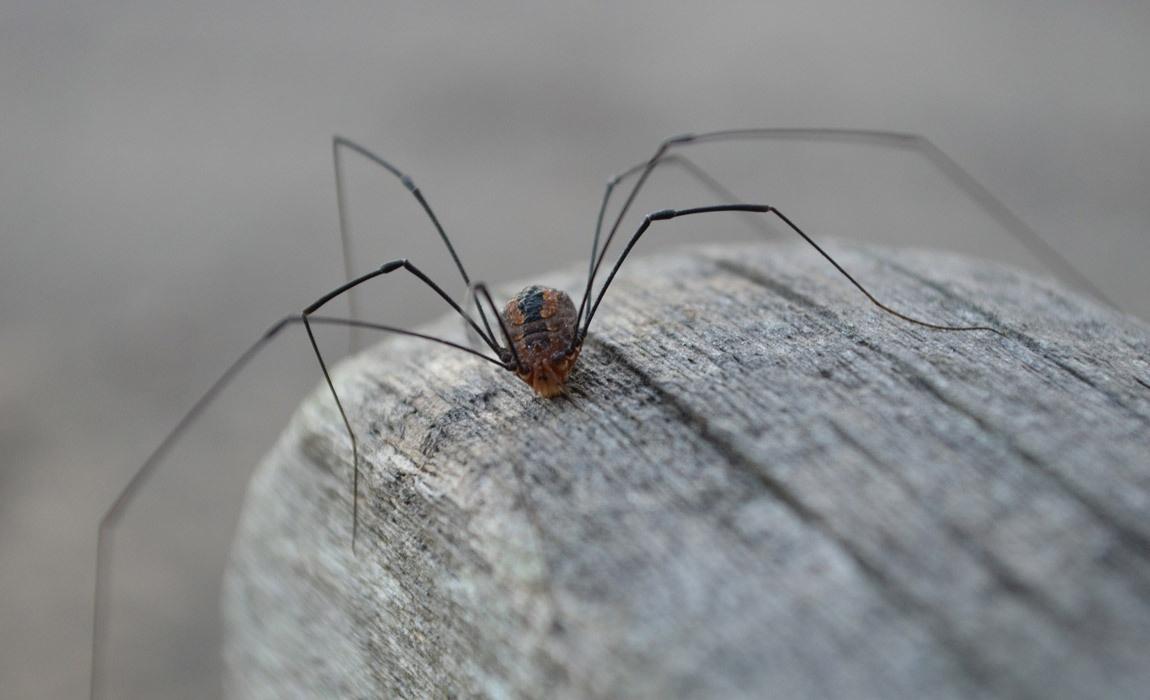We’ve all had that experience where we see the daddy long legs, and get the willies about a spider. Then we’ve all heard crazy things about these fascinating creatures like they are highly poisonous, but their mouth is just too small to bite. Or maybe you’ve heard that they eat mosquitoes, so keep them around. It can be hard to get past all the urban legends, but once you do, these insects are quite exquisite. Take a few minutes, and learn the truth behind daddy long legs, and help set the record straight when you hear someone spinning one of the legendary stories.
Both harvestmen and certain spiders are called daddy longlegs. Harvestmen belong to the Order Opiliones, while the term is also used for a group of spiders known as daddy-longlegs spiders in the family Pholcidae, each with unique characteristics and habitats.
How Many Kids Do You Have?
- Daddy long legs spiders encompass different creatures, including harvestmen, cellar spiders, and crane flies, each with unique traits.
- Despite common myths, most daddy long legs are not spiders and are harmless to humans, lacking venomous capabilities.
- Harvestmen, commonly mistaken as spiders, are more closely related to scorpions and don't produce silk for webs.
- Pholcid cellar spiders, often confused with daddy long legs, are actual spiders but pose no significant threat to humans.
- Daddy long legs play beneficial roles in the ecosystem, from scavenging dead organic material to controlling pest populations.
Are Daddy Long Legs Even Spiders?
First things first, we need to discuss the most common urban legend that daddy long legs are spiders. The reality is that the general term, Daddy Long Legs Spider, refers to a general category of animals that includes Opiliones, pholcid spiders, and harvestman
Harvestman - Opiliones
This is the primary categorization of what people refer to as a daddy long legs spider. However, the reality is that harvestmen aren't even spiders. In fact, they are actually considered arachnids. There are as more than 6,000 species from this group that are collectively referred to as Daddy Long Legs due to their appearance - having thin, extremely long legs and a compact body.
While you might not guess from first glance, these "spiders" are actually more closely related to scorpions and this is probably where the myths about their bites or stings being so deadly come from.
Crane Fly - Family Tipuliae
Crane Flies are actually insects but some folks in the southeastern united states refer to them as being daddy long legs, because of their long legs and compact bodies even though they are insects and a completely different group than the opiliones arachnids.
Cellar Spiders - Pholcidae
Finally, this group of pholcid actually are spiders but they simply aren't actually daddy long legs spiders.
These pholcid spiders, despite their resemblance to daddy long legs, have distinct features that set them apart.
They possess venom glands and fangs, which are absent in true daddy long legs.
Additionally, their body structure is different, with a fused cephalothorax and abdomen, as opposed to the single-bodied structure of Opiliones. These spiders are often found in homes and gardens, where they construct loose, irregular webs to catch their prey.
While they may appear fragile, these pholcids are actually quite agile and can move quickly when disturbed, making them efficient hunters in their environment.
To Many Men, These Are All Daddy Long Legs
No matter what you call them - daddy long legs, daddy longlegs, cellar spiders, crane flies, or harvestmen, the reality is they are all "long legs". However, when talking about these animals and trying to separate fact from fiction and myth from reality ... it is essential to make sure to refer to things correctly!
Man likes to name things based on superficial observation and so over the centuries we've collectively referred to a whole bunch of things as being "spiders" ... but the reality is that only certain species should actually be considered to be a "daddy long legs spider" where as most others simply aren't.
Do Daddy Long Legs Bite?
Daddy long legs have mouths, like many other insects, and can therefore have the capability to bite.
However, you seldom hear about a daddy long leg biting a human. The reason for this is just physiology. The mouth of the actual pholcids, or the actual spider, has what’s called uncate fangs. This means there are short fangs with a third tooth that meets the fang like a pincer.
This is the same mechanism as that of brown recluse spiders. However, in this instance, it’s speculated there is just not enough muscle strength to actually penetrate human skin. Additionally, daddy long legs lack venom glands, which means they cannot inject toxins into their prey or humans, making them harmless.
Venomous Or Poisonous: How Harmful Are The Bites?
Unlike what you might see in popular culture, on TikTok or in the movies, Daddy long legs spider bites aren't harmful. Even when taking into consideration the broad family of animals referred to as daddy long legs spiders, the range of harm or pain from a bite is minimal. Daddy long legs spiders simply don't have venom glands or fangs and their mouths are very small.
Venomous:
When we say something is venomous, that has a very distinct physiological description. First, this means that they have a venom gland to produce the substance. Then, there are ducts to carry the venom through to something like a fang, which injects it into the target organism. Without all of these characteristics, a creature is not actually venomous.
Poisonous:
Poisonous, on the other hand, simply means something about the creature may react when other things that come in contact with or ingest it. In either of these cases, the effect is not universal, but is specifically tailored as a defensive measure or toward the organism’s prey. The Opilionid daddy long legs does not have venom glands, ducts, or fangs, and therefore cannot be classified as venomous. Unlike spiders, harvestmen do not have venom glands or fangs. The pholcids do, in fact, have the physiology to be classified as venomous. However, there is no evidence to suggest that venom is toxic to human beings, letting the web of this urban legend finally die.
Do Daddy Long Legs Spiders Make Webs?
This again depends on what creature you’re actually discussing. Cellar spiders do make webs because they are actual spiders, but crane flies and harvestman do not.
The true daddy long legs, which are the Opilionids, do not have a segmented body, and therefore cannot spin a web. In fact, they actually are more of a scavenger than a hunter, and therefore don’t have the need for webs. The pholcid daddy long legs, on the other hand, do have the segmented body, and do make silk for webs.
For example, the marbled cellar spider, a type of Pholcidae, is known for its distinctive patterned abdomen and dark stripe, and it creates webs to catch prey. Most researchers don’t actually label pholcids as daddy long legs, technically speaking. However, they are commonly mistaken by the general public because of the initial similarity between the size of its body and legs.
Do Daddy Long Legs Have a Useful Purpose?
All plants and animals ultimately have a purpose.
Both the Opilionids and pholcids have beneficial purposes and are best to leave alone whenever possible. The Opilionids will scavenge a variety of things, including dead insects, plants, even bird droppings. They are often found in leaf litter on the forest floor, playing a crucial role in the ecosystem.
Pholcids are more of your predator spider, which is why they create the web. They’ll attract in a variety of other insects, removing them from the environment. Additionally, they prey on other spiders, often invading the webs of other spiders to consume the host or their prey.
Do Daddy Long Legs Grow Their Legs Back?
You may remember a friend growing up telling you that a daddy long leg's legs will grow back. This is not entirely accurate, but there is speculation it's not entirely false either. However, don't let kids pull their legs off just to find out, that's just wrong. This urban legend came from the fact that these creatures will voluntarily give up a leg to get away from a predator.
However, they aren't like a starfish that will grow back one of its appendages, at least not as an adult. To understand this, you have to understand that these creatures have an exoskeleton. What that means is that they must molt, or shed, that exoskeleton to grow.
While scientists haven't observed it directly, the speculation is that if a young daddy long leg loses a leg, it will start to grow back as it continues molting. However, full-grown daddy long legs no longer molt, so they will not grow back any appendages they lose or that are injured.
Are Daddy Long Legs Endangered?
When you think of endangered species, you likely have images of whales, gorillas, rhinos, or elephants run through your mind. But daddy long legs? It is true that some species of daddy long legs are actually endangered. When we think of the endangered daddy long legs, we're actually talking about the Opilionids, the true daddy long legs.
Currently, we know that six species are either critically endangered or extinct, eight are endangered, and several more are vulnerable. This may not seem like a big deal, but it has devastating consequences for the ecosystem, including indigenous birds that feed on them. Think about that before grabbing your shoe the next time you see one. What was the most surprising fact you learned about daddy long legs, or did we miss something you find interesting?
Hey James Hills wants you to share this!

